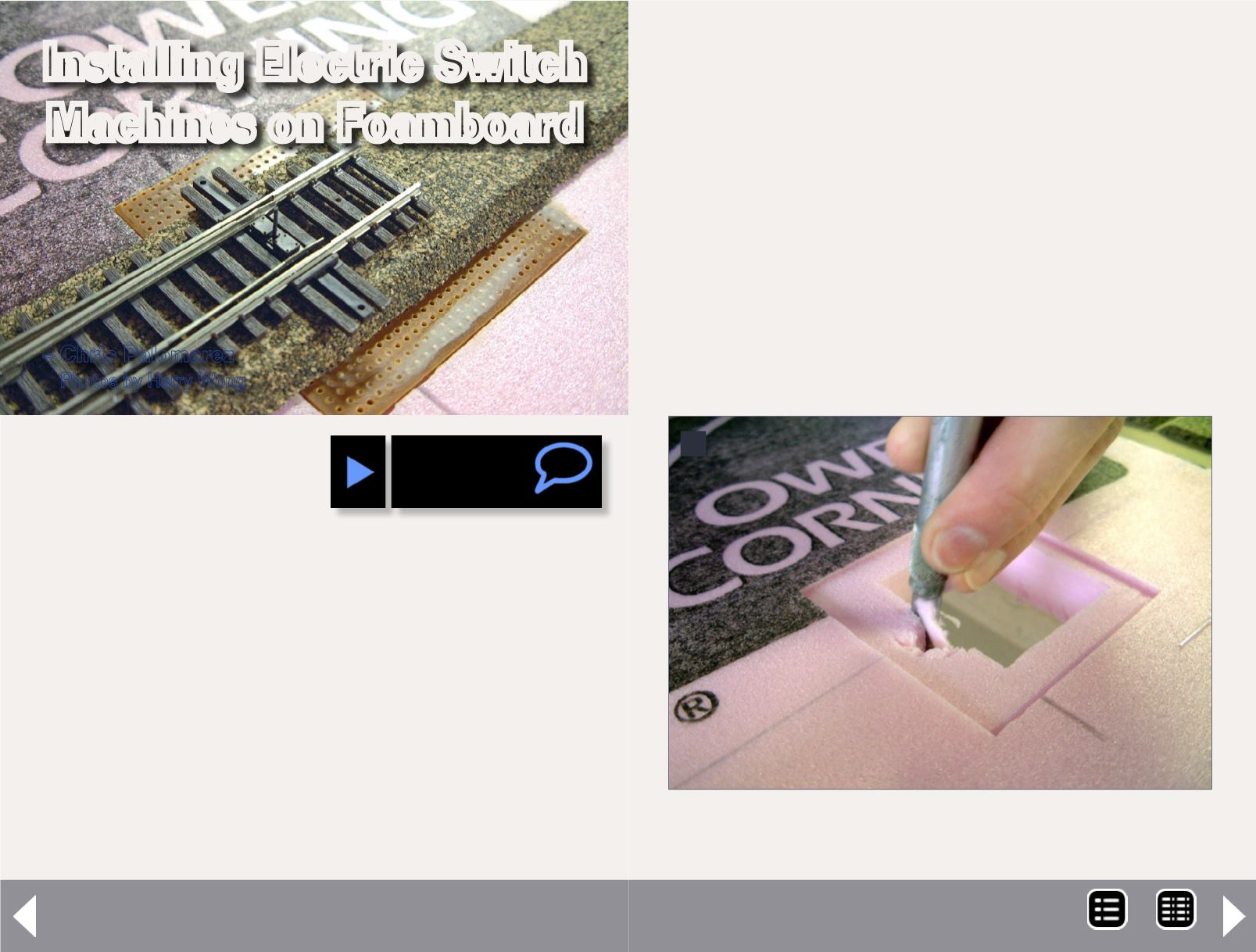
Switch machines on foam - 1
T
he introduction of using two-inch extruded foam as
the main foundation for track has certainly helped
lighten many a module, and also allowed the modeler
to more easily sculpt scenic contours below the track grade.
Foam has made things easier, but presented a new problem:
mounting electric switch machines.
The obvious and simple solution is to use small blocks of
Masonite and glue them to the underside of the foam. This
solution presents several pitfalls. First, when building mod-
ules, it's best to keep the switch machines recessed inside for
fold up legs, as well to minimize potential damage when being
moved. Second, depending on the adhesive, the likelihood of
Installing Electric Switch
Machines on Foamboard
A simple technique for
reliable installation ...
– Chris Palomarez
Photos by Harry Wong
1: After turnout and the throwbar is located. A square
hole and recess is cut in the foam.
1
the bond failing increases the more the module is transported
and encounters heat/humidity fluctuations. Third, and a per-
sonal pet peeve, are excessively long actuator wires.
A different approach was required to account for these
potential pitfalls. In Free-mo, there was a lot of interest in
keeping the modules light and quick to setup. This meant
switch machine installations needed to be installed from the
"top down" rather then from the "bottom up" with plywood.
In early 2000, Brian Kreimendahl, and I developed this solu-
tion for a module set he was constructing. His modules were
substantially larger than 24", with a 42" total module width.
Foam module tops were a necessity to keep the weight of
each section manageable. We used initially single-sided cop-
per clad circuit board, but then graduated to using perfed/
MRH-Nov 2013


